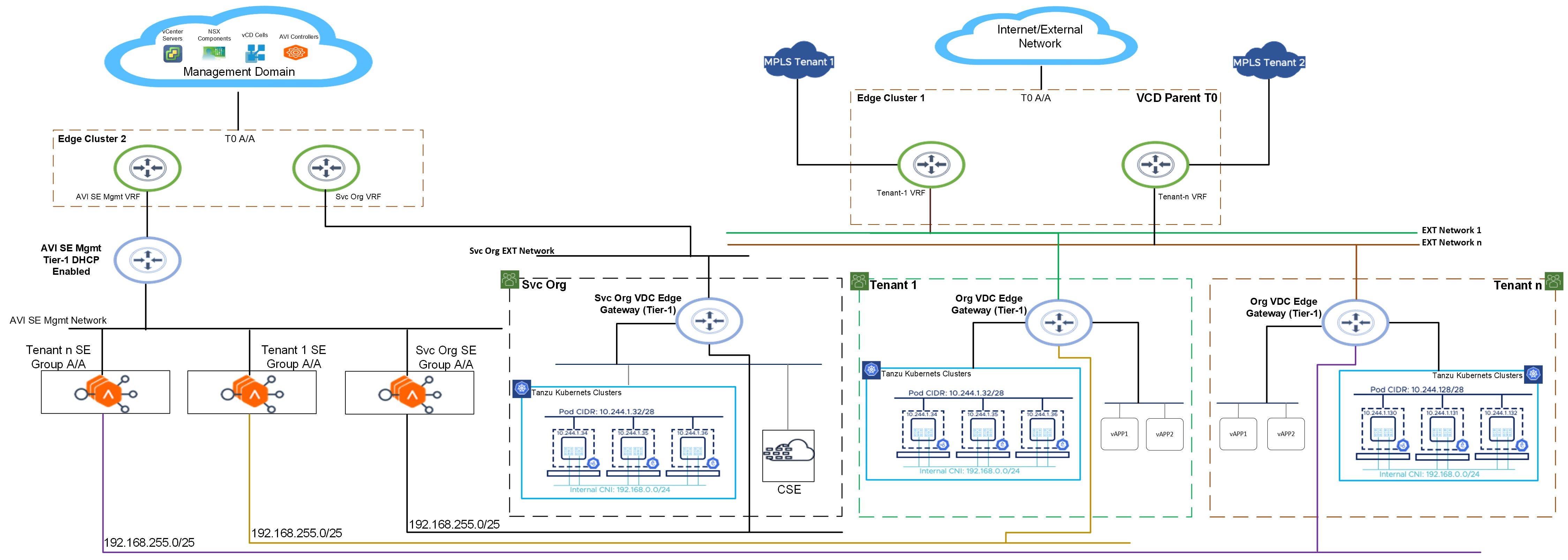In part 1 of this blog series, I discussed Container Service Extension 4.0 platform architecture and a high-level overview of a production-grade deployment. This blog post is focused on configuring NSX Advanced Load Balancer and integrating it with VCD.
I will not go through each and every step of the deployment & configuration as I have already written an article on the same topic in the past. I will discuss the configuration steps that I took to deploy the topology that is shown below.
Let me quickly go over the NSX-T networking setup before getting into the NSX ALB configuration.
I have deployed a new edge cluster on a dedicated vSphere cluster for traffic separation. This edge cluster resides in my compute/workload domain. The NSX-T manager managing the edges is deployed in my management domain.
On the left side of the architecture, you can see I have one Tier-0 gateway, and VRFs carved out for NSX ALB and CSE networking.… Read More









